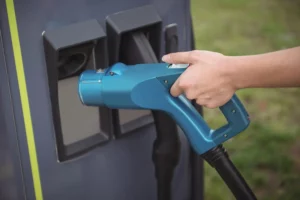
Home / EV Charging News / Can I charge an electric vehicle at home using a regular power outlet?
Many new EV owners wonder if it’s possible to charge their vehicle at home using a standard power outlet. The simple answer is yes, but it’s important to understand the implications and limitations of this approach. While a regular outlet provides a convenient and low-cost charging option, it may not be the most practical or efficient for everyone. Let’s break down what you need to know.
Charging an EV at home typically involves two options: a standard 120-volt outlet (Level 1) or a more powerful 240-volt outlet (Level 2). Using a regular household outlet, your vehicle can gain about 3-5 miles of range per hour. This setup is suitable for short commutes and overnight recharging but can take 20-40 hours to fully charge larger EV batteries. For faster results, a Level 2 system can deliver 20-30 miles of range per hour but requires professional installation.
A regular outlet might work fine for occasional or low-mileage drivers, but it quickly becomes impractical for those with longer commutes or frequent travel. The slower speed may mean your car isn’t fully charged when you need it, making a dedicated system a better long-term solution for such scenarios.
Using a regular outlet to charge your EV comes with some advantages. Firstly, it’s accessible—nearly every home is equipped with a 120-volt outlet, so you can begin charging without additional costs. Secondly, it’s straightforward and easy to use, requiring only the cable provided with your vehicle. For those who don’t drive extensively, this method is often sufficient to replenish the battery overnight. Additionally, for renters or people who plan to upgrade later, it’s a good temporary option.
Despite its convenience, there are notable drawbacks. The most significant issue is speed—a 120-volt outlet takes much longer to charge an EV compared to other methods. This can be frustrating if you need your car to be ready quickly or if your driving demands exceed what the outlet can provide overnight. Another concern is the potential strain on your home’s electrical system, especially in older properties. Standard outlets are not designed for sustained high-power use, which can lead to overheating or even electrical fires without proper precautions.
Charging an EV at home is safe if done correctly. Start by inspecting the outlet and wiring to ensure they’re in good condition. Avoid using an outlet that shares a circuit with other appliances, as this could overload the system. Older homes may require an upgrade to handle the power draw of an EV. Always use the charging cable provided by your vehicle’s manufacturer, as it’s specifically designed to prevent issues like overheating and electrical surges. Consulting a licensed electrician is highly recommended, especially if you plan to charge regularly.
For most EV owners, a Level 2 charging system is a worthwhile investment. While it requires the installation of a 240-volt outlet and can cost anywhere from $500 to $2,000, the benefits are significant. Charging time is drastically reduced, allowing you to fully power your vehicle in 4-10 hours, depending on the battery size. This setup is particularly useful for households with multiple EVs or drivers with longer commutes. Additionally, it future-proofs your home as EV adoption becomes more widespread.
While it’s possible to charge your electric vehicle at home using a regular outlet, this method is best suited for light or occasional use. It’s a cost-effective starting point for those with minimal daily mileage, but its slow speed and potential limitations make it less ideal for long-term or high-demand charging needs. Upgrading to a Level 2 system provides faster, more reliable charging, offering greater convenience and efficiency for daily drivers. Evaluating your driving habits and needs will help you choose the right solution for your EV.



